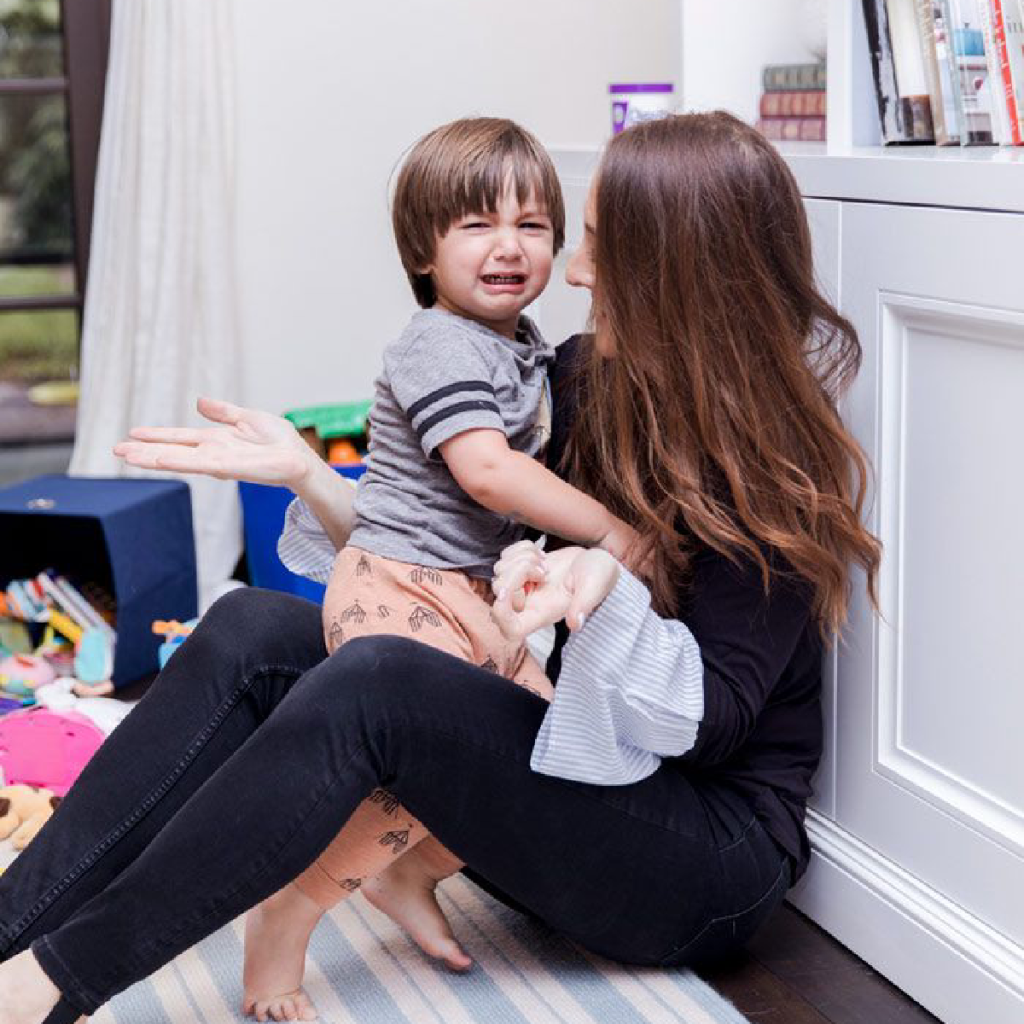Discover effective strategies for dealing with whining in the doctor’s office.
How to Handle Whining in the Doctor’s Office
Do you dread taking your child to the doctor’s office because you know the whining is going to start? We feel your pain! But fear not, because we have some tips and tricks up our sleeves to help you survive the whining storm. Let’s dive right in!

Understanding the Causes of Whining
First things first, let’s understand why your little one unleashes their inner opera singer as soon as you step foot in the waiting room. There are a few common culprits behind all that whining.
But let’s dive deeper into the world of whining and explore the intricate reasons behind this melodious phenomenon.
Fear and Anxiety in Children
Going to the doctor can be an intimidating experience for children. The unfamiliar environment, the strange faces, and the possible discomfort of medical procedures can trigger fear and anxiety, leading to an orchestra of whining.
Imagine being a child, walking into a room filled with white coats, stethoscopes, and unfamiliar equipment. The fear of the unknown can grip their little hearts, causing them to express their unease through the power of whining.
Furthermore, the anticipation of potential pain or discomfort can heighten their anxiety. The mere thought of a needle prick or a throat swab can send shivers down their spines, resulting in a crescendo of whines.
Sensory Overload in the Doctor’s Office
Imagine this – bright lights, loud noises, and curious smells all bombarding your senses at once. It can be overwhelming for anyone, especially for little ones who are still trying to make sense of the world. This sensory overload can pave the way for some serious whining.
The doctor’s office is a sensory playground, but not always in a pleasant way. The fluorescent lights shining down, the sound of medical equipment humming in the background, and the distinct smell of antiseptic can create a symphony of overwhelming sensations.
For a child, who is still learning to process their surroundings, this sensory overload can be too much to handle. The whining becomes their coping mechanism, a way to express their discomfort and seek solace amidst the chaos.
Lack of Control and Independence
Children are naturally curious and crave a sense of control over their own lives. However, the doctor’s office can sometimes feel like a place where control is ripped away. Having to undress, lie down on an examination table, and endure poking and prodding can make even the most patient child whine in protest.
Imagine being told what to do, where to sit, and how to behave. It can be frustrating for anyone, let alone a child who is still discovering their autonomy. The loss of control over their own body and actions can lead to a chorus of whines.
Furthermore, the lack of understanding about the purpose of medical procedures can add to their frustration. From their perspective, it might seem like a series of unnecessary intrusions into their personal space. The whining becomes their voice, their way of asserting their desire for independence and control.
In conclusion, whining at the doctor’s office is not just a simple act of annoyance. It is a complex symphony of emotions, rooted in fear, sensory overload, and a desire for control. Understanding these underlying causes can help us navigate this melodious journey with our little ones, ensuring a harmonious experience for all.
Preparing Your Child for the Doctor’s Visit
Now that we know the reasons behind the whining symphony, let’s equip ourselves with some strategies to prepare our little ones for the doctor’s visit.
Going to the doctor can be a daunting experience for children. The unfamiliar environment, strange instruments, and the fear of the unknown can make them anxious and whiny. However, with some careful preparation and a few fun activities, we can help ease their fears and turn the doctor’s visit into a positive experience.
Discussing the Visit in Advance
Communication is key, even when it comes to doctor visits. Explain to your child what they can expect during the visit. Speak to them in a language they understand and assure them that the doctor is there to help. Let them know that the doctor will check their height, weight, and listen to their heartbeat, just like superheroes do. The more they know, the less they’ll fear, and the less they’ll whine.
You can also use age-appropriate books or videos to explain the concept of doctor visits. Show them pictures of children happily sitting on the doctor’s chair or getting a sticker after the visit. This will help them visualize the experience and feel more at ease.
Role-playing Doctor Visits at Home
Let’s turn the whining into a game! Set up a pretend doctor’s office at home and take turns being the doctor and the patient. Use a toy stethoscope, a play thermometer, and band-aids to make the experience more realistic. This helps your child become familiar with the procedures and reduces anxiety. Plus, it’s a great opportunity for some imaginative play!
Encourage your child to express their concerns and ask questions during the role-playing session. This will give you a chance to address any misconceptions or fears they may have. Reassure them that the doctor’s visit is not about pain, but about keeping them healthy and strong.
Creating a Comforting Routine
Routines are magical. They provide a sense of comfort and stability, especially in unfamiliar situations. Create a pre-doctor visit routine that involves calming activities such as reading a favorite book or cuddling with a stuffed animal. This will help soothe any pre-visit jitters and keep the whining at bay.
On the day of the visit, make sure to dress your child in comfortable clothes that are easy to take off and put back on. This will make the examination process more convenient and less stressful for both of you.
Remember, it’s important to stay calm and positive during the entire process. Your child looks up to you for guidance and reassurance. By following these strategies, you can help your child overcome their fear of doctor visits and transform them into confident little patients.
Strategies to Distract and Engage Your Child
Alright, armed with our pre-visit preparations, let’s tackle the whining head-on during the visit itself. It’s all about distractions and engagement!
Visiting the doctor’s office with a child can be a challenging experience. The unfamiliar environment, the waiting time, and the anticipation of medical procedures can all contribute to a child’s anxiety and whining. However, there are several effective strategies that parents can employ to distract and engage their child, making the visit a more positive and manageable experience.
Using Toys and Books
Don’t leave home without a secret arsenal of toys and books. Bring your child’s favorite toys or a new toy that captures their attention. The familiar objects can provide a sense of comfort and security, helping to alleviate any anxiety they may be feeling. Additionally, introducing a new toy can create excitement and curiosity, diverting their attention away from the doctor’s appointments and minimizing the whining.
Books, on the other hand, have a magical ability to transport children to different worlds. The colorful illustrations and captivating stories can captivate their imagination, allowing them to momentarily forget about their surroundings. Choose books that align with your child’s interests and reading level, ensuring that they are engaged and entertained throughout the visit.
Utilizing Technology
In this digital age, we have the advantage of technology at our fingertips. Download apps or educational games on your phone or tablet that your child can play with during the visit. The interactive nature of these apps can provide a stimulating and engaging experience, keeping your child occupied and distracted. Just be sure to set some ground rules on screen time to avoid any post-visit meltdowns.
Technology can also be used as a tool to educate and inform your child about the medical procedures they may encounter. There are various child-friendly videos and animations available online that explain common medical procedures in a simple and age-appropriate manner. Watching these videos together can help demystify the process, reducing fear and anxiety.
Engaging in Conversation
Talking and distracting go hand in hand. Engage your child in conversation to divert their attention from the whine-worthy situation. Ask them about their favorite activities, get them to tell you a story, or even play a silly game of “I Spy.” By focusing their attention on the conversation, you can create a positive and interactive atmosphere, making the visit more enjoyable for both of you.
Furthermore, involving your child in decision-making can empower them and make them feel more in control. For example, let them choose which examination room to go into or allow them to decide on a reward for their bravery after the visit. By giving them a sense of agency, you can help alleviate their anxiety and reduce whining.
Remember, every child is unique, and what works for one may not work for another. It’s important to be patient, flexible, and attuned to your child’s needs. With these strategies in mind, you can navigate the doctor’s visit with ease, minimizing whining and creating a positive experience for your child.
Working with the Medical Staff

Remember, you are not alone in this whining-wrestling match. The medical staff can be your allies in making the doctor’s visit a less whine-inducing experience.
When it comes to handling whining in the doctor’s office, there are a few strategies you can employ to make the visit smoother for both you and your child. One important aspect is communicating your child’s fears and concerns to the medical staff. Your child’s fears need a voice too, and by sharing them with the medical staff, you can ensure that they are addressed and taken into consideration. The medical staff are experts in handling anxious little patients and can adjust their approach accordingly, making the experience more comfortable for your child.
Another way to create a more positive environment for your child is by requesting a child-friendly waiting area. A dash of child-friendly decor can work wonders in distracting your little one and turning their whining into excitement. You can ask the medical staff if they can provide colorful toys, friendly posters, or even a fish tank to make the waiting area more appealing. By creating a space that your child finds engaging and enjoyable, you can help alleviate their anxiety and make the visit more enjoyable for everyone involved.
While the doctor may be the main focus of the visit, it’s important not to overlook the role of the nurses and assistants. These individuals are the unsung heroes of the doctor’s office, with a magical ability to calm anxious children and turn frowns into smiles. Take a moment to appreciate their efforts and let them know that you value their role in creating a positive experience for your child. A simple pat on the back or a heartfelt thank you can go a long way in fostering a supportive and collaborative relationship with the medical staff.
Remember, handling whining in the doctor’s office is all about being prepared, engaged, and working with the medical staff. By following these strategies and actively involving the medical staff, you can turn the whine into a winning situation. Soon enough, those doctor’s visits will be a breeze, filled with smiles and laughter!



